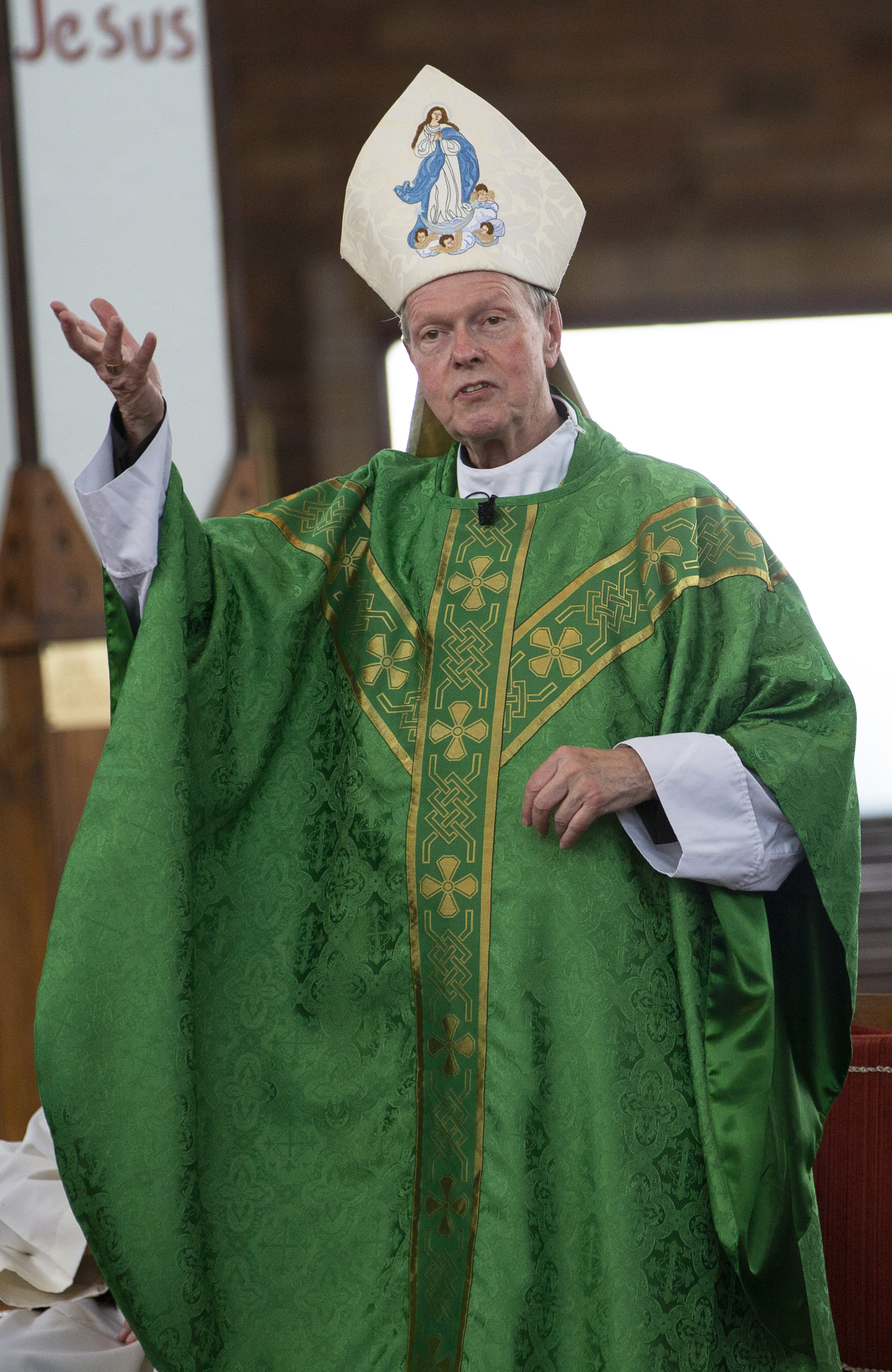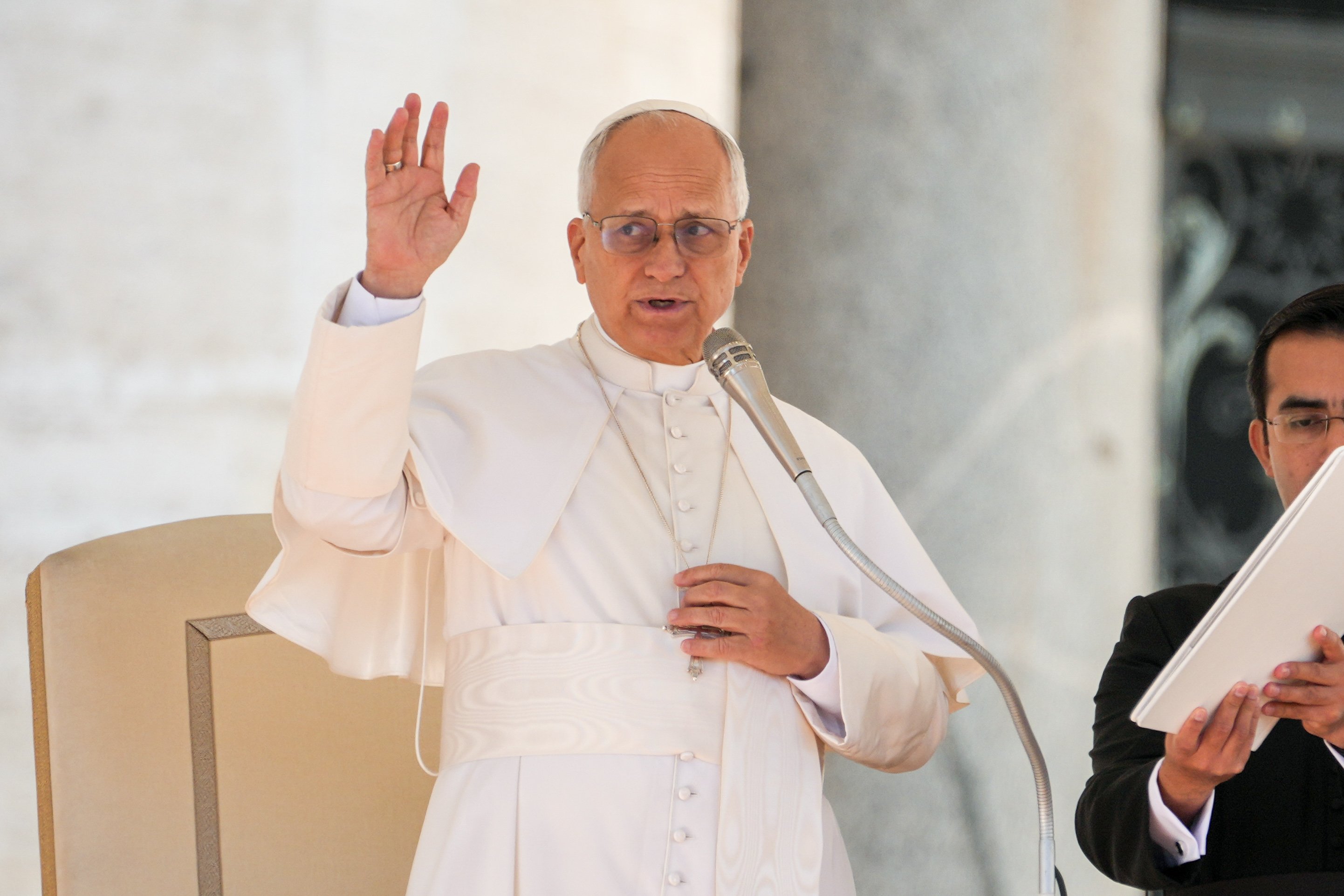May 26, 2020 at 10:29 p.m.
Diocesan guidelines for drive-in Mass, drive-up Holy Communion
As the faithful await word on when public Masses can be celebrated, the Diocese of Albany has released a guide on how drive-in Masses or drive-up Holy Communion, while maintaining social distancing guidelines, can be celebrated. These are some of the highlights:
Where it is possible to celebrate Mass outside (for example in a parking lot, church grounds, or on the church steps) local authorities and law enforcement agencies MUST be consulted well before arrangements are made for the Mass to make sure of any local restrictions or bylaws.
Wherever possible, those present at the Mass should be able to participate without the use of cell phones. The Mass may still be livestreamed or recorded. An adequate PA system needs to be in place in order for the congregants to hear, and a dais or platform should be set up for the altar, so that congregants may see the celebration of the Mass.
A table with an open corporal and a hand sanitizer should be in place at the point where Holy Communion is to be given. As the Mass is being celebrated outside, care should be taken that the vessels to be used to hold the elements for Holy Communion can be covered. Arrangements need to be in place in case of an overflow of numbers that exceeds the capacity of the parking lot.
Ushers or stewards will need extra training so that they can perform their duties. These duties would include: Supervising and directing the arrival of vehicles, parking and an orderly exit at the conclusion of the Mass; as well as supervising and directing people when they leave and then return to their cars as they come forward to receive Holy Communion.
In cases where the faithful are in their cars (either for a drive-in Mass or drive-up distribution of Holy Communion), the communicants should get out of their cars to receive, one car at a time.
This is preferable from a public health perspective, because it permits the priest (wearing a mask but not gloves) to stand next to a hand sanitizing station and thus gives him the ability to sanitize his hands after each Holy Communion, if necessary. If the priest walks from car to car or from window to window, this hand hygiene would be difficult. It is also preferable from a sacramental perspective, because it removes the temptation to pass the Eucharist from person to person in the car, if a passenger is not near an open window, and eliminates the problem of self-communication.
In addition, distribution of the Eucharist in another vessel or container (a plastic bag, paper cup, or a metal pyx) is not warranted from a public health perspective and may even increase risk.
In principle, there should be no public health objection to having people exit their cars, one car at a time (perhaps guided by an usher to direct traffic). This would not constitute a large gathering.
- Pope Leo’s four favorite films
- Bishop Seitz ‘very optimistic’ religious worker visa issue will soon see ‘positive developments’
- US bishops advance new sainthood cause for ‘Good Samaritan’ Jesuit priest
- USCCB president warns against partisanship; nuncio urges bishops to follow pope’s ‘maps of hope’
- New English version of Bible to be called The Catholic American Bible
- Churches should be joyful places of sharing gift of faith, pope says
- ‘Leo from Chicago:’ Vatican releases new documentary on pope’s early years
- Archbishop Coakley and Bishop Flores are elected president and vice president of USCCB
- Survey: Young adult Catholics are the most engaged and most at risk of leaving the church
- U.S. bishops to Pope Leo: We ‘will continue to stand with migrants and defend everyone’s right to worship free from intimidation’








Comments:
You must login to comment.